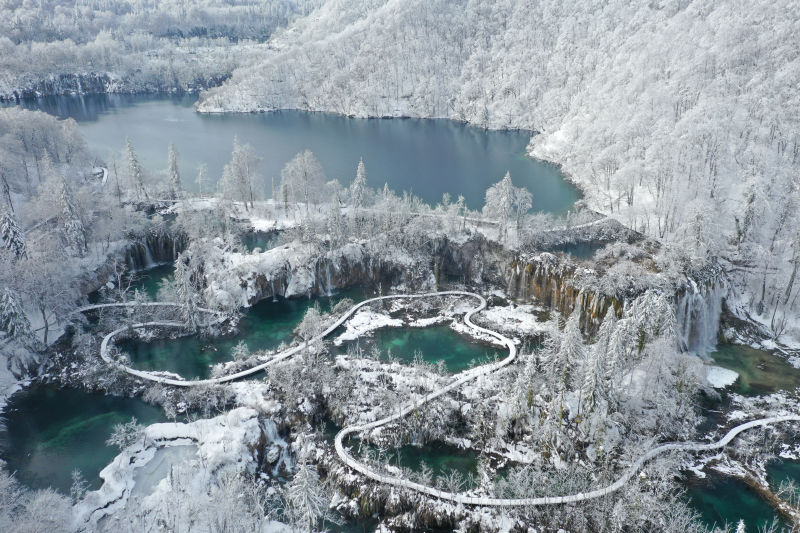Tastes of Venezuela in Arepera Maracay
- Vedran Obućina

- Nov 10, 2020
- 4 min read
Updated: Oct 12, 2021
Many danced merrily to the songs of the music group Cubismo. Latin American sounds are not only Cuban, because Ricardo Luque from Venezuela is well known to the Croatian public. Similar rhythms can be heard in the small but warm space of the Arepera Maracay diner in the very centre of Zagreb. This is the only place in Croatia where you can taste indigenous Venezuelan flavours; how could one not, when Ricardo's whole family works here, his wife Sanja, daughters Isadora and Lucia, and son Jorge, who is also the main chef, and is helped by his younger son Armando, who is still a high school student.

In the arepera (as the place where the arepas are made is called) we are greeted by Isadora Luque and her best friend and employee Majda, who took us through all the richness of Venezuelan flavours. In a pleasant atmosphere, we drink guarapita, a light alcoholic drink that is especially popular among Venezuelan students, and which is most often made from homemade brandy based on sugar cane and tropical fruits. With this refreshment, we embark on a culinary journey to a country quite unknown to Croats, getting to know arepa first of all.

Arepa is a typical Venezuelan streetfood, made on the basis of flour from pre-cooked ground corn and various imaginative fillings. "We have been eating arepas since we were kids, and they are eaten all day long, from breakfast to dinner," Isadora tells us as our eyes fly over the exotic names of the various traditional arepas on offer. In Venezuela, arepas can be found at every turn, and in Croatia, they began to be offered a few years ago when the Luque family started preparing arepas at various festivals and gastronomic events. Finally, the decision was made to open an arepera named after Ricardo's hometown, Maracay. They opened on the first day of September, in the pandemic year 2020, which is especially commendable, and everything is decorated in a colourful Venezuelan style, or as Isadora would say, just like their kitchen at home.

It is specific for arepa that there is no gluten, and the hosts do not use GMO products. Soon the arepas come to our table. The first is Reina pepiada, which consists of chicken, avocado, mayonnaise and salted cheese. The name of this dish means "handsome queen" and is a reminder of the Miss Universe pageant in 1955. It was Susana Dujim and in her honour this popular arepa was named. We did, however, think that this concerned the logo of Arepera Maracay itself, where a young woman in a Venezuelan costume is depicted. It is actually Isadora herself, painted by Venezuelan Lucia Borjas, who recently earned a master’s degree in animated film and new media at the Academy of Fine Arts in Zagreb!

Another very typical arepa we tried is Pavellón sin carne, which consists of black beans, sweet banana plantana and avocado. The rich sweet-salty taste is also revealed by a typical Venezuelan plate (pabellón) consisting of black beans, cheese and sweet sycamore. All this is beautifully assembled into an arepa made of corn, which is an ancient tradition in that part of the world. Namely, the arepas were made even before the Europeans arrived in South America, and the younger brother Armando tells us that this is part of the Native Indian tradition in which corn is viewed as part of man. In a short conversation, Armando also tells us that arepas in Venezuela are smaller, but people eat more of them. Adaptation to the Croatian way of understanding food was necessary, and the reactions were good. Given that Latin American cuisine is very little represented in Croatia, it should come as no surprise that the first thought of many passers-by is that it is a spicy food similar to Mexican. Far from it! Venezuelan arepas and empanadas (which are also made from corn flour) are a wealth of flavours in which every food can be unmistakably recognized. After all, everything is done fresh in the arepera, which is especially pleasing!

Then comes Tostones con carne, fried plantains with shredded beef, cheese, salad and various sauces: homemade guasacaca (sauce based on green peppers and coriander), salsa de mango (mango sauce and hot peppers), huancaína (sauce based on aromatic peppers and smoked cheese) and guasacaca picante (sauce based on red peppers and coriander and hot peppers). The whole palette of flavours and aromas in front of us requires some mild and refreshing drink, and every Venezuelan would recommend papelón con limón, moscavado sugar lemonade and lime. In addition, we add fried yucca (known as cassava or manioca) with salsa de ajo (mayonnaise with garlic). This variation on the plate inevitably reminds of the vivid colours of the arepera, but also the Venezuelan flags itself! Of course, the sweet ending of this culinary journey, which consists of two desserts: quesillo (Venezuelan rožata) and sabor canela (cinnamon flan), should not be missed. The phenomenal Venezuelan rum Diplómatico goes well with it.

Arepera Maracay is a wonderful and warm place of heartfelt smiles, which with its unmistakable blend of Latin American and Croatian spirit was missing on the gastronomic map of Zagreb. The originality of the arepa is confirmed by many Latinos who stop and try the familiar flavours away from home. We hope they expand this offer, as well as the potential opening of a restaurant of Latin American cuisine in the capital of Croatia, and until then enjoy the arepas at the following address:
Arepera Maracay
Preradovićeva 9, Zagreb




















Comments